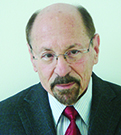In January, the Federal Motor Carrier Safety Administration issued a bulletin to medical examiners and training organizations regarding obstructive sleep apnea. A sleep physician with commercial transportation expertise weighs in.
In the November 2014 issue of Sleep Review I published an article addressing the many aspects of sleep apnea and challenges facing the trucking industry including screening, testing, treatment, compliance, and regulatory, legal, and economic factors. Controversy and emotions among the many stakeholders run high, and unfortunately there are no easy answers to achieve cost, quality, and timely accessibility.
In 2000, and again in 2008 and 2012, the medical review board (MRB) and medical expert panel made recommendations to the Federal Motor Carrier Safety Administration (FMCSA) concerning screening, diagnosis, treatment, and monitoring of commercial drivers for obstructive sleep apnea (OSA). These guidelines have been inconsistently applied across the industry by and among companies, owner-operators, drivers, and DOT medical examiners—resulting in uncertainty, confusion, and the perception of unfairness.
In 2014 the FMCSA established the National Registry of Certified Medical Examiners, a program that has minimum training and testing requirements for healthcare professionals who perform qualification examinations for drivers to ensure that examiners fully understand the medical standards in the Federal Motor Carrier Safety Regulations and related guidance applicable to OSA. As a result, better trained examiners will and have been screening and identifying more drivers at risk for OSA.
In response to industry concerns, public law 113-45, signed into law on October 15, 2014, requires that the formal rule-making process be followed regarding OSA screening, testing, and treatment of commercial motor vehicle operators and forbids the issuing of any informal guidance on this subject in spite of prior guidelines. Future regulation requires input by public forum and analysis of the benefits and costs of regulating sleep apnea, which are not required for guidance.
More schools for training and testing examiners have been established recently. Due to trucking industry complaints, 2 US representatives stated in a letter to the FMCSA that some training facilities are skirting the law by telling examiners to test for sleep apnea.
The stated purpose of the recent FMCSA Bulletin to Medical Examiners and Training Organizations Regarding Obstructive Sleep Apnea (available at https://nationalregistry.fmcsa.dot.gov) is to “remind [italics mine] healthcare professionals on FMCSA’s National Registry of Certified Medical Examiners of the current physical qualifications standard and advisory criteria concerning the respiratory system, specifically how the requirements apply to drivers that may have obstructive sleep apnea.”
Release of the bulletin has prompted discussion, controversy, and misinterpretation as to its intent and supposed consequences. While at first glance it may appear that it is in direct conflict with public law 113-45, the bulletin does not specifically indicate any directives, rules, or parameters that must be followed and is simply a reminder of various issues that should be considered by examiners.
The bulletin reviews commonly accepted symptoms and impairment of cognitive abilities such as reaction time and decision-making associated with OSA as well as long-term risk for adverse health effects, and the potential for serious and dangerous outcomes for the transportation industry.
The bulletin refers to prior FMCSA advisory criteria that have provided guidance for examiners in making the determination if a driver satisfies the respiratory standard but does not specify screening, diagnostic, or treatment guidelines that must be used by examiners to determine if a driver is at risk for OSA; rather, it encourages examiners to consider certain factors in making certification decisions.
The primary safety goal is to identify and manage drivers with moderate to severe OSA (which the bulletin defines as AHI of 15 or greater). The bulletin does not address the degree of OSA based on other factors such as oxygen saturation nor does it consider the difference between AHI determined by attended polysomnography and limited-channel ambulatory testing devices, none of which reliably ensure chain of custody (See November 2014 Sleep Review for a detailed discussion of this subject).
The bulletin mentions options for treatment including weight loss, dental appliances (ie, oral appliances), and CPAP but does not address surgical options, does not indicate that a dental appliance is an acceptable treatment alternative for a driver at this time, nor does it address compliance monitoring or usage criteria for dental appliances or CPAP.
The bulletin lists multiple commonly accepted symptoms and risk factors that should be considered by examiners but concludes that current regulations do not include guidelines for screening, diagnoses, and treatment of OSA, and it is the position of the FMCSA that examiners rely on their training and expertise to decide if a driver is at risk of or requires treatment for OSA and urges examiners to explain to drivers the basis for their decision for denial of medical certification. It’s not that an examiner or employer cannot use MRB (or for that matter AASM or any other) guidelines, only that the FMCSA cannot specify guidelines that must be used.
With the establishment of the National Registry, the absence of formal rules per public law 113-45, and as the FMCSA places the responsibility squarely on the shoulders of the examiner, I predict that the number of drivers identified at risk for OSA won’t be decreasing anytime soon.
Still individual drivers, owner-operators, and large trucking companies can do what they believe to be the right thing: get testing and treatment based on existing FMCSA and/or AASM advisory criteria. Proactive OSA programs can reduce insurance premiums, liability, accidents, and healthcare costs, and improve driver performance, longevity, and quality of life.
I urge all medical and trucking industry stakeholders, including individual drivers, to provide their comments when (and if) there is an opportunity for input via public forum as required prior to any future rulemaking that will govern sleep apnea screening, testing, and treatment of truckers.
Edward D. Michaelson, MD FACP FCCP FAASM, is based in Ft Lauderdale, Fla, and a member of Sleep Review’s Editorial Advisory Board.




